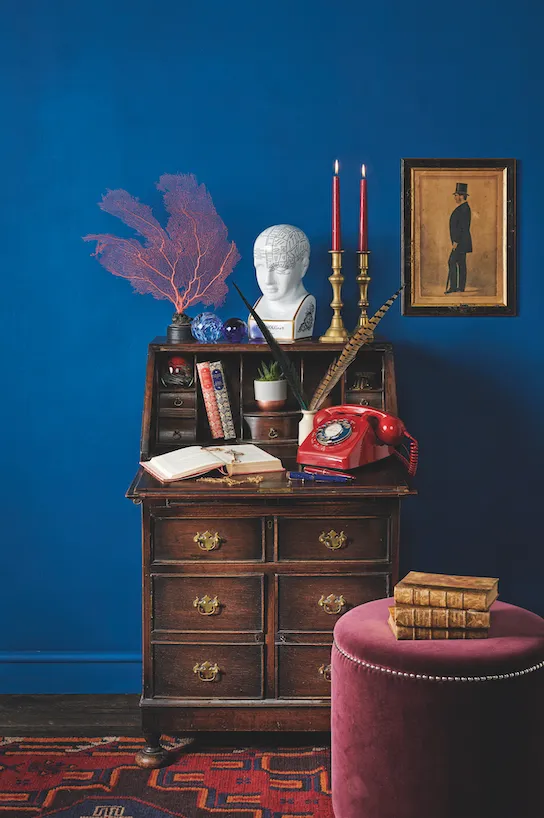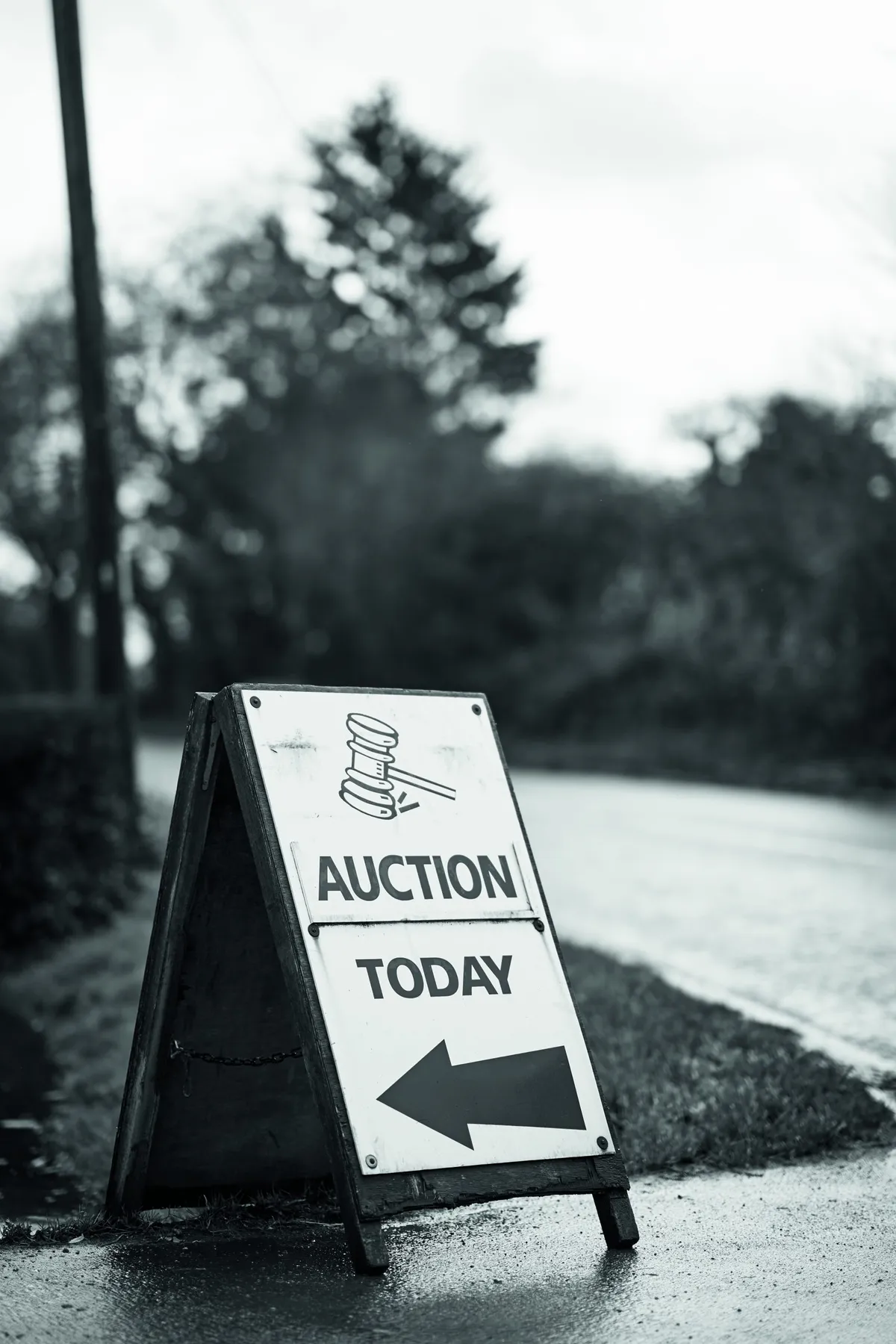
Confession time: I’ve never bought at an auction before. So, when my editor, Mel, suggested that visiting a regional auction house may be the best way to showcase the value it can offer, I jumped at the chance. Along with Mel, our art director and a photographer, we headed to Clevedon Salerooms, armed with a heavily highlighted catalogue, my maximum bids for each lot (having added on the buyer’s premium of 22 per cent), and £1,000 of the magazine’s money…
The room was chilly, but the mood was cheery – it was a few weeks before Christmas, and there was tinsel on the podium, the aroma of mulled wine in the air, and a jolly buzz from the dealers and members of the public who were meandering among the lots. As Clevedon director and auctioneer Marc Burridge says: ‘A sale here is social – people can meet, chat, have a coffee and a bacon roll.’ There certainly were plenty of regulars and, at that point, I felt a touch insecure and out of place. I seized my paddle and told myself that this feeling of trepidation was silly –I was just buying furniture!
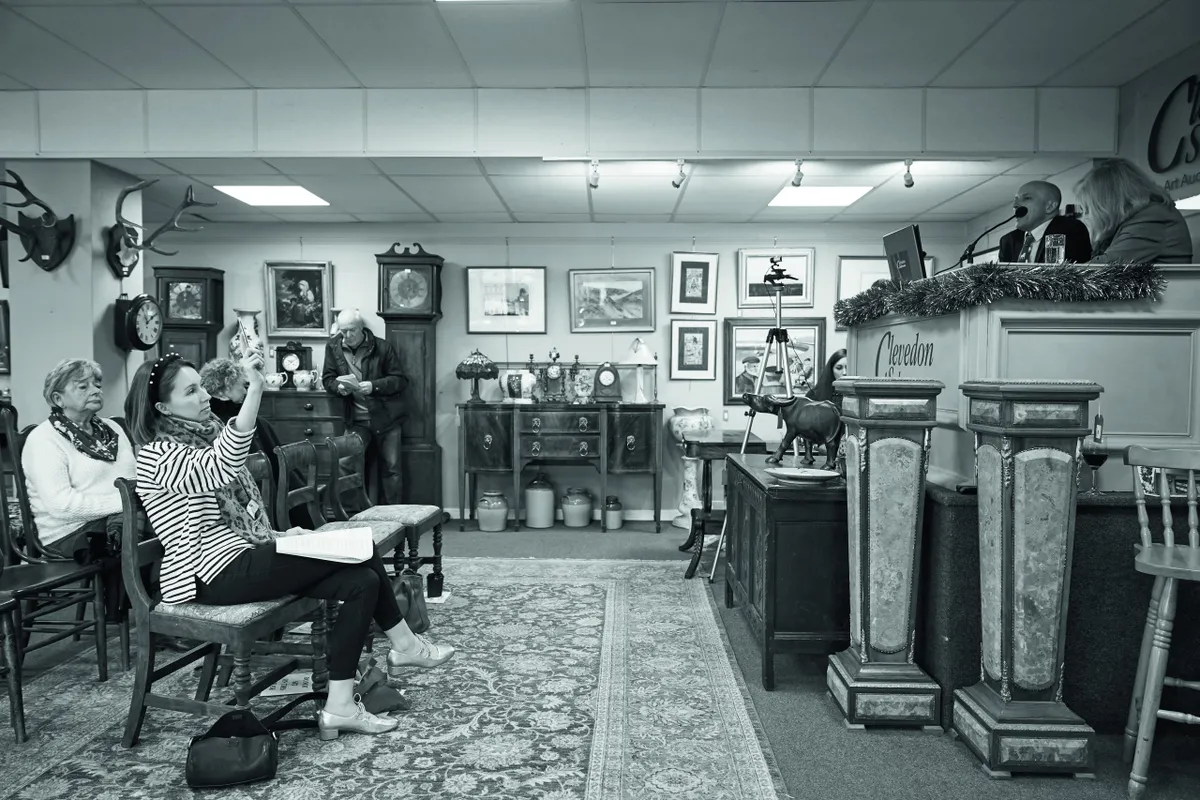
A solid start
Brown furniture offers excellent value at auction at the moment,with dining chairs in particular being affected by a drop in popularity. Baffling, but good for us. When the auctioneer called ‘Lot 497’ – three good Edwardian chairs with slightly tatty upholstery – I readied my paddle. Antiques Roadshow expert Lisa Lloyd later told me that, reupholstered, the ‘retail value would be around £150-£200 for the three chairs’. The hammer fell in my favour at just £30. It was my first-ever bid and I was a little jittery – but with a win under my belt, the nerves began to cede to excitement.
From drab to fab: meet the expert who transformed the chairs
Leigh-Anne Treadwell from Bristol Upholstery Collectivebrought our beautiful Edwardian chairs into the next chapter of their lives. ‘Old chairs have spirit,’ she muses. ‘But more than that, antique and vintage furniture is well made, with strong frames that can withstand the restoration process time and time again. These three were very worthy and the fabric, delicious!’So how much should we expect to pay to reupholster a dining chair? ‘Prices range depending on the work needed but, on average, pin cushion top seats cost £95-£150 each.’
Lots 502, 503 and 505 were all quality Middle Eastern wool rugs – we would have been happy with any one of them. Heart pounding, I jumped in with the second bid, and the fourth, and the sixth – the winning one was mine at £65 – £5 under my ceiling. Even if I had spent more, Lisa believes it would have been good value. ‘It would retail for around £150,’ she explained, before adding a word of warning, ‘Be careful, rugs can often be a touch smelly and beware of moth damage!’ These are things that I hadn’t known to check for, and I was relieved that my rug was not afflicted.
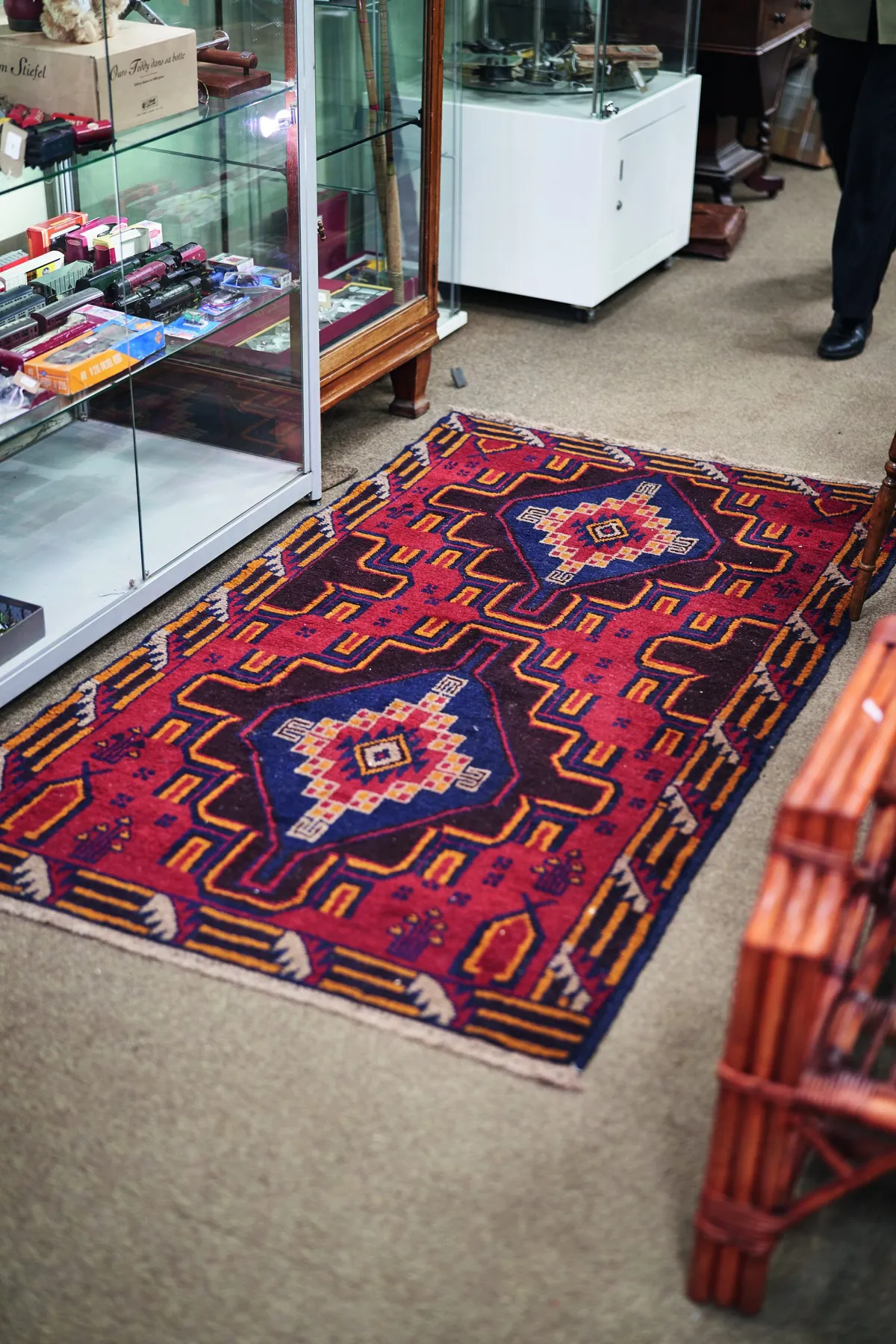
Bewildering pace
The next lot on the cards was a late George III mahogany chest of drawers, which sadly you won’t see on these pages. It sold to an online bidder for £180 – £30 over my maximum. It took me a while to wrap my head around what was happening when there were bidders coming through online. The auction moved so fast at times that, at first, it was hard to tell whether the highest offer was ‘in the room’ or an ‘internet bid’ as the auctioneer would say. At the time, these online bids felt irritating – even if I wasn’t bidding, I still wanted it to go to someone in the room! But I do see the advantages of bidding remotely: ‘It saves you on travel and you can cover more than one auction in one day,’ explains Marc.
The disappointment stung, but we needed to focus now on our back-up plan. The magazine photoshoot image we’d plannedneeded a chest, or a table, or something like that… enter lot 586, a beautiful old oak coffer (p57). With this one, I was battling commissioned bids (a maximum offer left with the auctioneer by someone who was unable to attend the auction on the day). Every time I raised my paddle, it felt like the auctioneer was batting my offer away, as he had a higher figure ‘on the books’. But, eventually, I upstaged the absentee bidder, winning the coffer for £140.
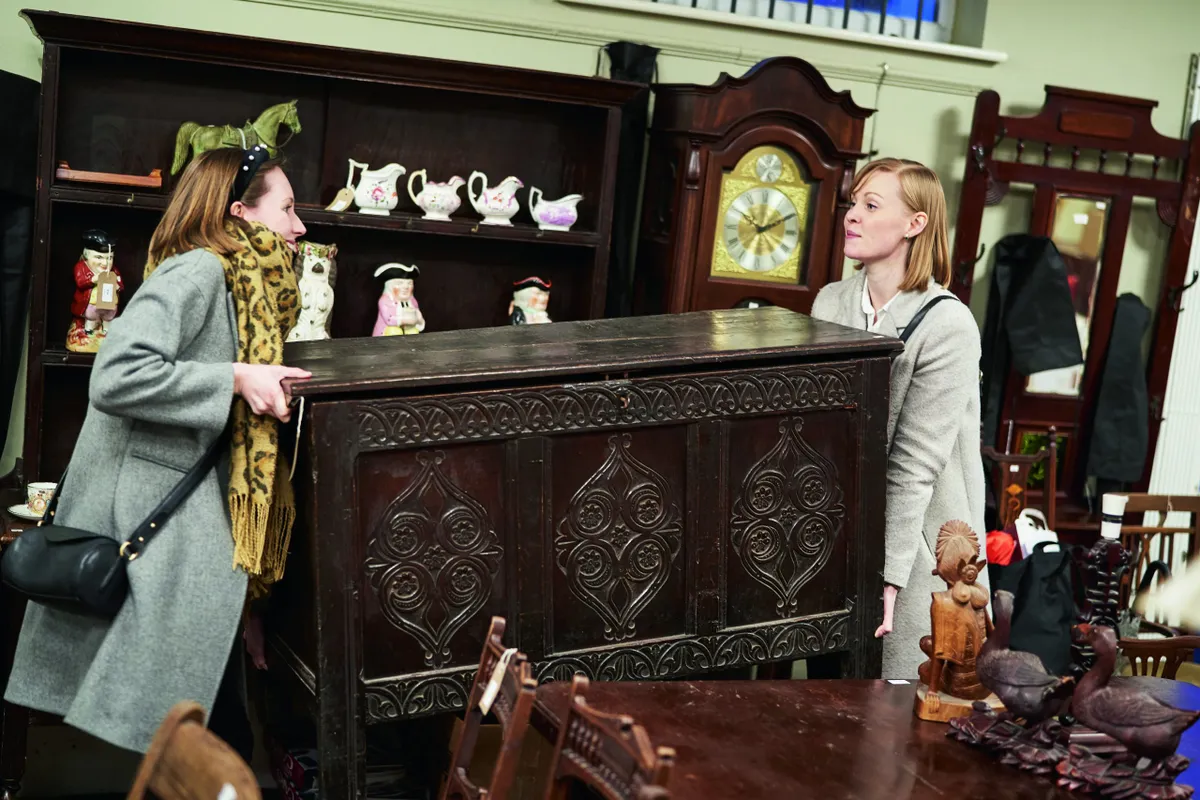
Curb my enthusiasm
The lots were moving at pace, and it was soon time for lot 605 – a beautiful gilt girandole (p57). I found myself up against an online bidder once more. My rival bid £50; I bid £55; rival, £60 – with my adrenalin pumping, I was somehow oblivious to the fact that we were fast coming up to my maximum bid of £70 – me, £65; rival £70; me, £75! I’d bid over my ceiling, but I hadn’t realised. Thankfully, the gavel went down at £75 – I’d won. But as soon as Mel said, ‘You’ve gone over, but it’s fine,’ I was mortified. I was only reassured because we’d already saved plenty on the budget elsewhere, so such a minor overspend didn’t matter.
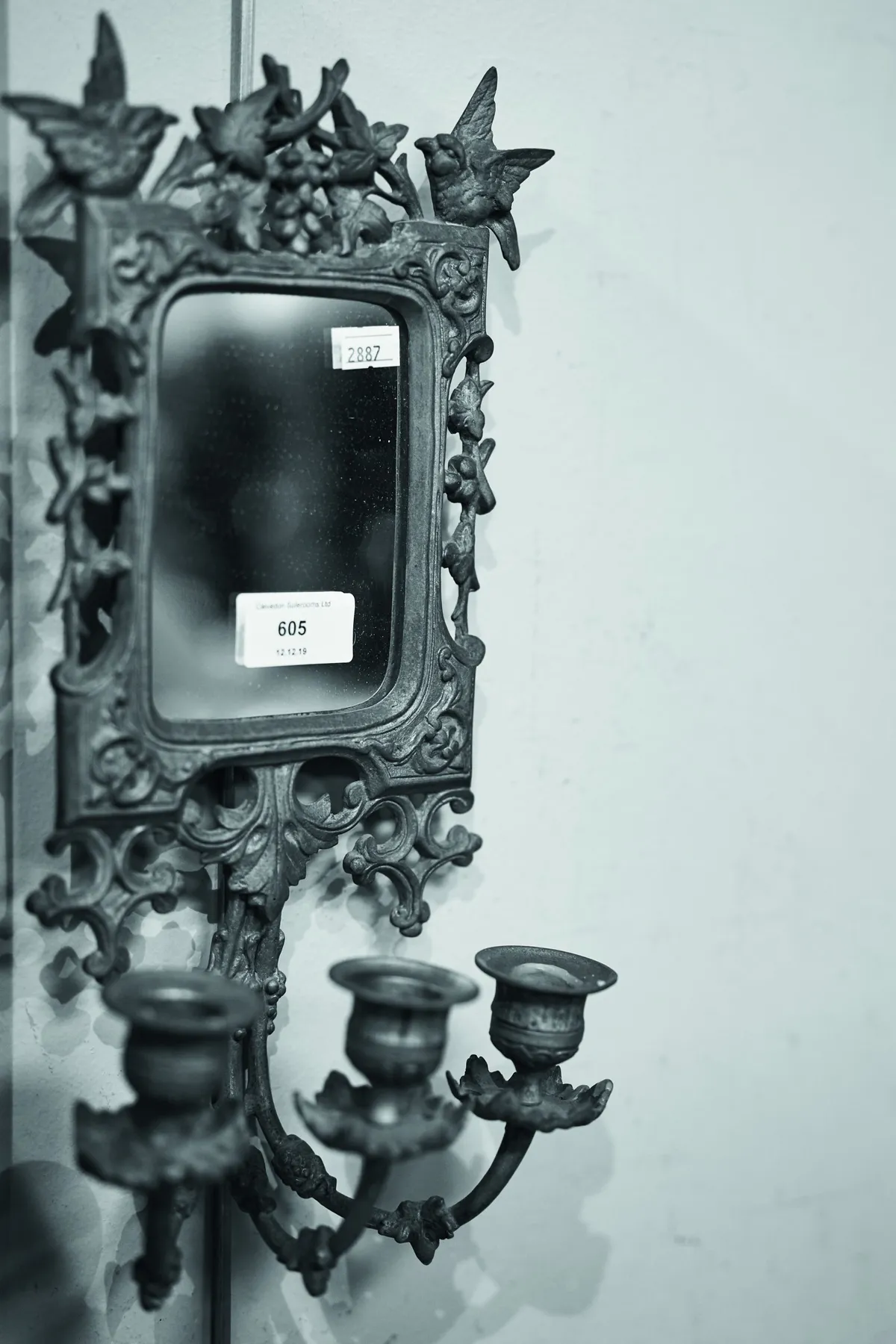
After a short interlude spent rebuking myself for breaking the number one rule, it was time to bidon my favourite item of the day – lot 634, a modest oak bureau (p53). A regulation flurry of bidding ensued and I snapped it up for £55 (happily well within budget!). ‘That’s an absolute bargain,’ proclaims Lisa, who laments that bureaux generally don’t fetch a great deal at auction:‘even nice Georgian ones can be bought at auction for as little as £100.’
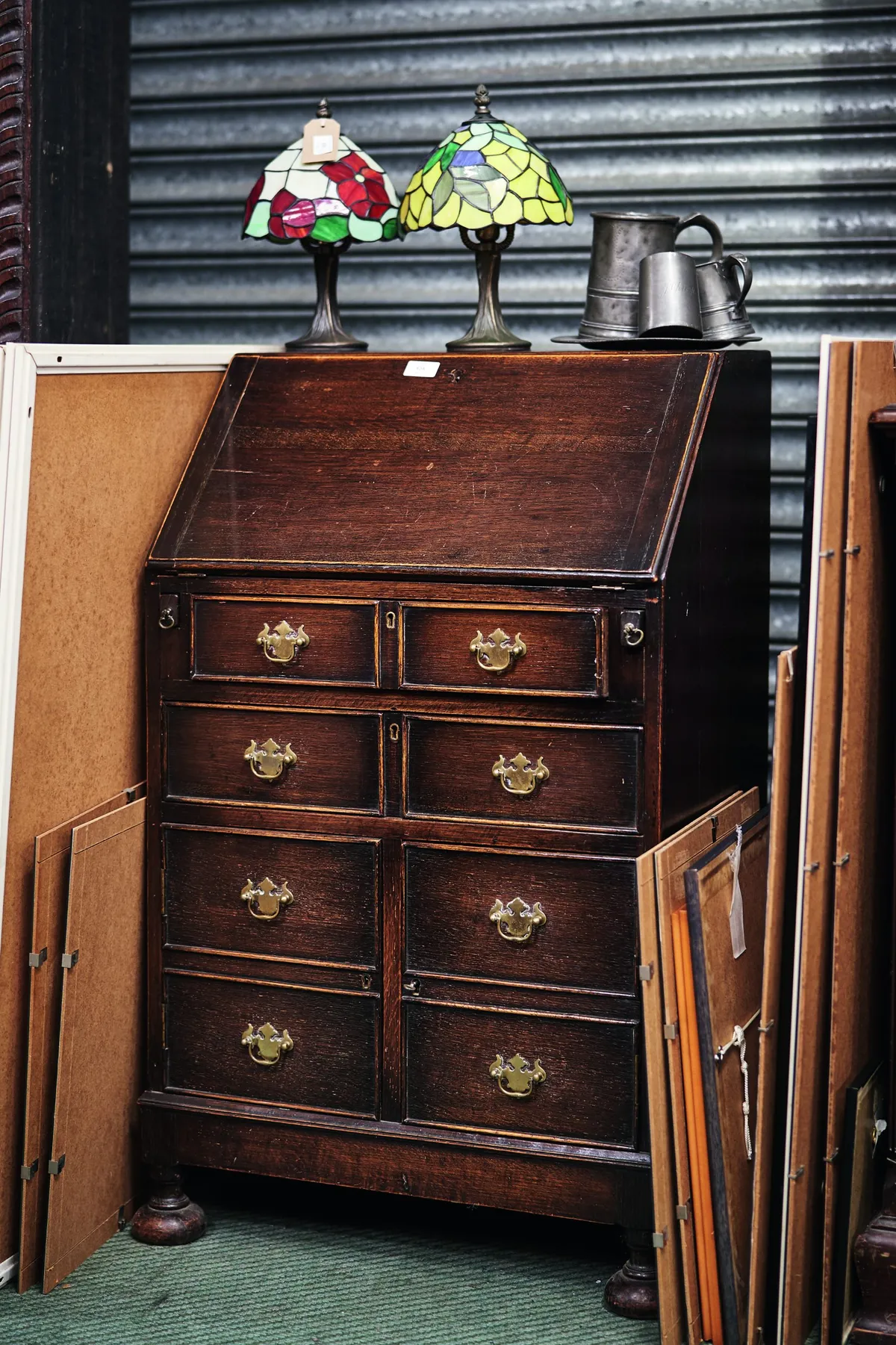
Three strikes
After a break for a glass of mulled wine the next three lots I bid on were not to be. We missed out on: a pair of Czech glass vases that went for £35; a glass dome with plinth, which fetched £45; and a collection of Victorian candlesticks, £65. Had I made some calculations, I might have realised I was well under budget, and that I could have adjusted my maximum spends on all of these lots.
It was pitch black outside when the auctioneer called lot 825 – a brass etagere or trolley (p55). I had been anticipating a tussle all day for this one. Drinks carts like this are highly popular, and we’d set a high maximum accordingly: £150. But, remarkably, the auctioneer called ‘Sold!’ at £45 – £5 under its low estimate. I bunched my hand into a fist and pulled it towards me. Yes!
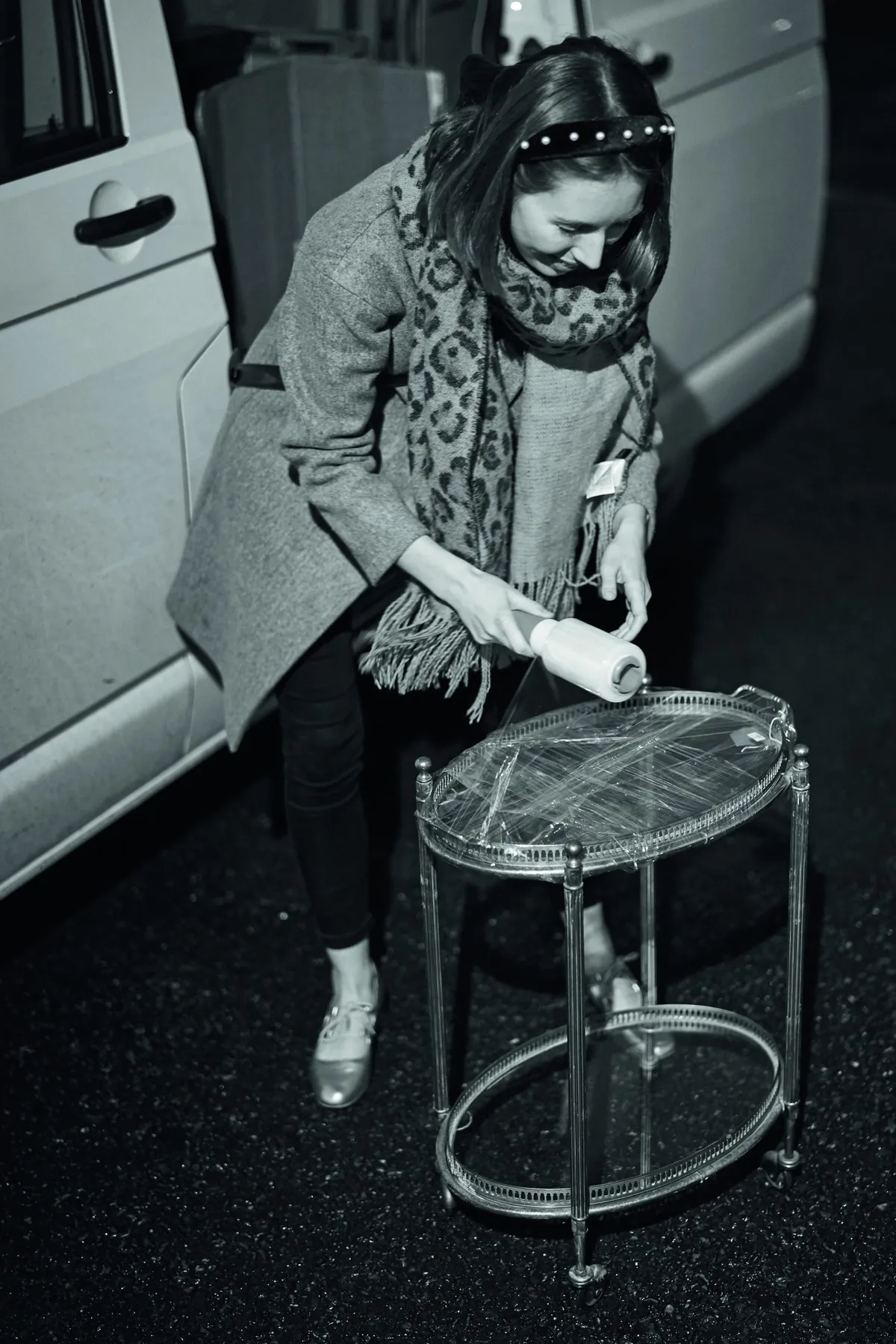
It was time to settle up – our six lots came to just £518.24, including buyer’s premium and VAT. After we’d loaded our bounty into the van, I realised what a roller coaster the day had been. I’d gone from a nervous bidder to an overeager one, with states of frustration and euphoria too. But, after it all, it’s safe to say that I am quite the auction convert. And how much did we save by shopping at a regional auction? Lisa Lloyd gives our total haul that day a retail value of up to £1,200. Whatever our losses, we certainly made up for them.
Lessons learned: 4 things I found out as a first-time bidder
1. You have to know how much you want to spendbefore bidding starts, and be strict. I learned first-hand that you can get carried away with the competition of the sale!
2. The sale previewis essential. You can properly gauge the quality of the items you’re interested in and we found some amazing pieces that I had flicked past in the catalogue.
3. The buyer’s premiumand VAT make ahugedifferenceto the final price you pay.
4. If it’s winter, bring a coat!The room was on the cool side, and as I spent so much time sitting still waiting for my lots, I was pretty chilly.

How we styled the pieces we bought
1
This handsome harlequin set of chairs was an amazing steal in the salesroom – just £30 for all three! Once freshened up with new upholstery in a classic Morris & Co print, these stylish seats look ready for many more years of enjoyment.
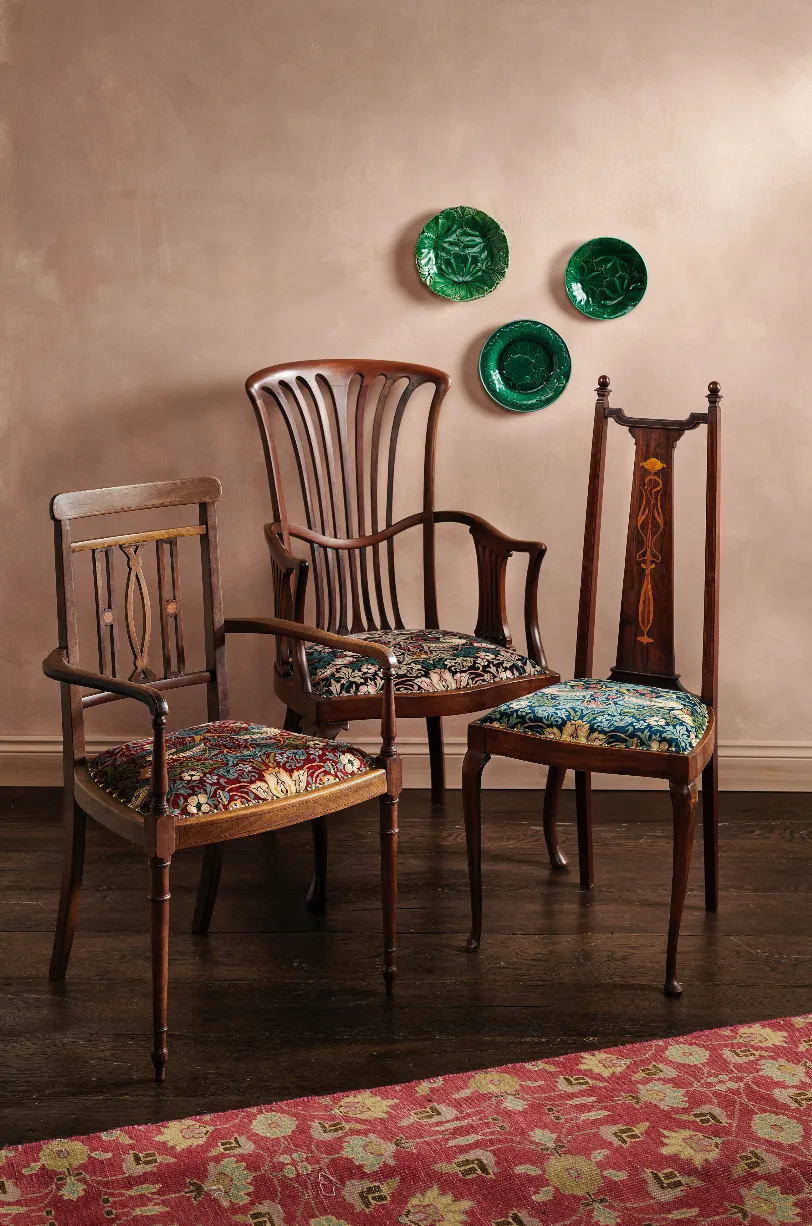
2
This etagere – snapped up for just £45 – makes a unique display stand for your treasures, from ornaments, lamps and sculptures to pictures and objets d’art.
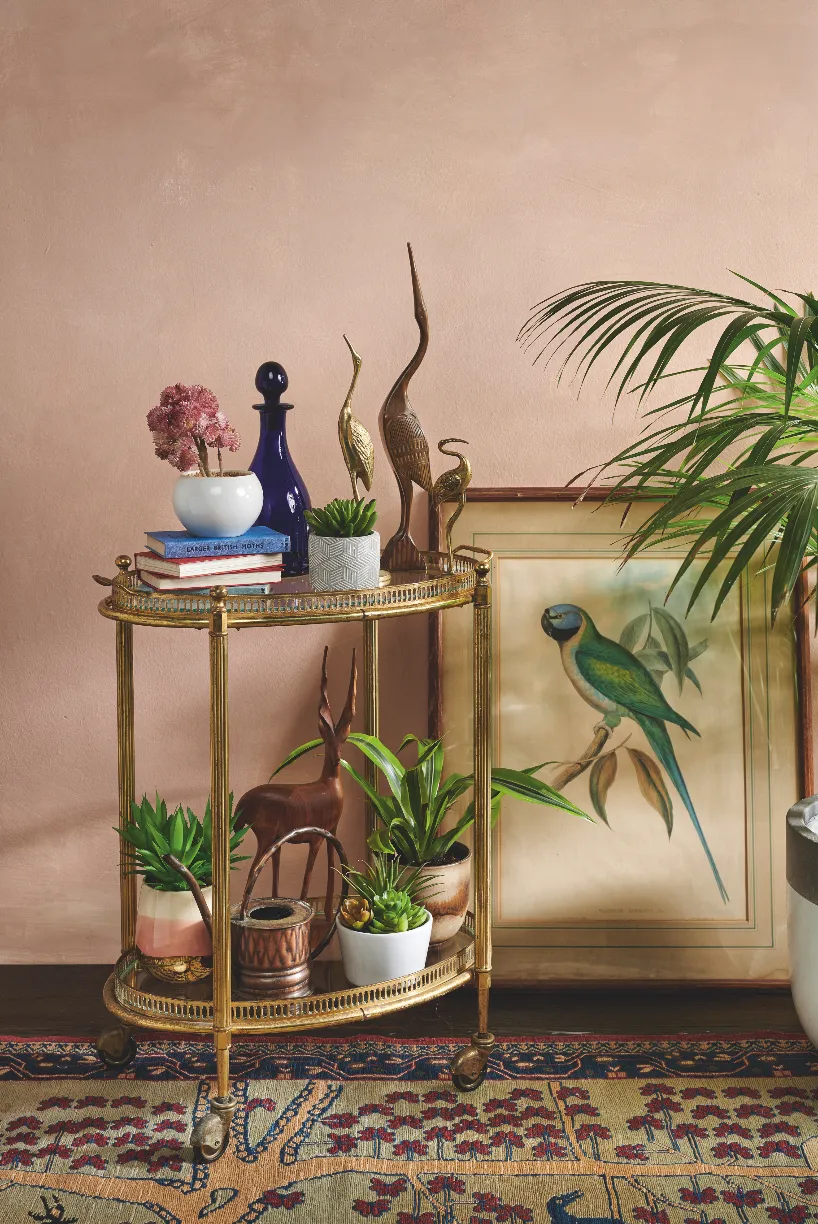
3
Dark wooden furniture – such as our hard-won coffer – looks stunning when offset against boldly decorated walls. To finish, team with ornate patterns and a decorative girandole (also an auction find) for an exotic look.
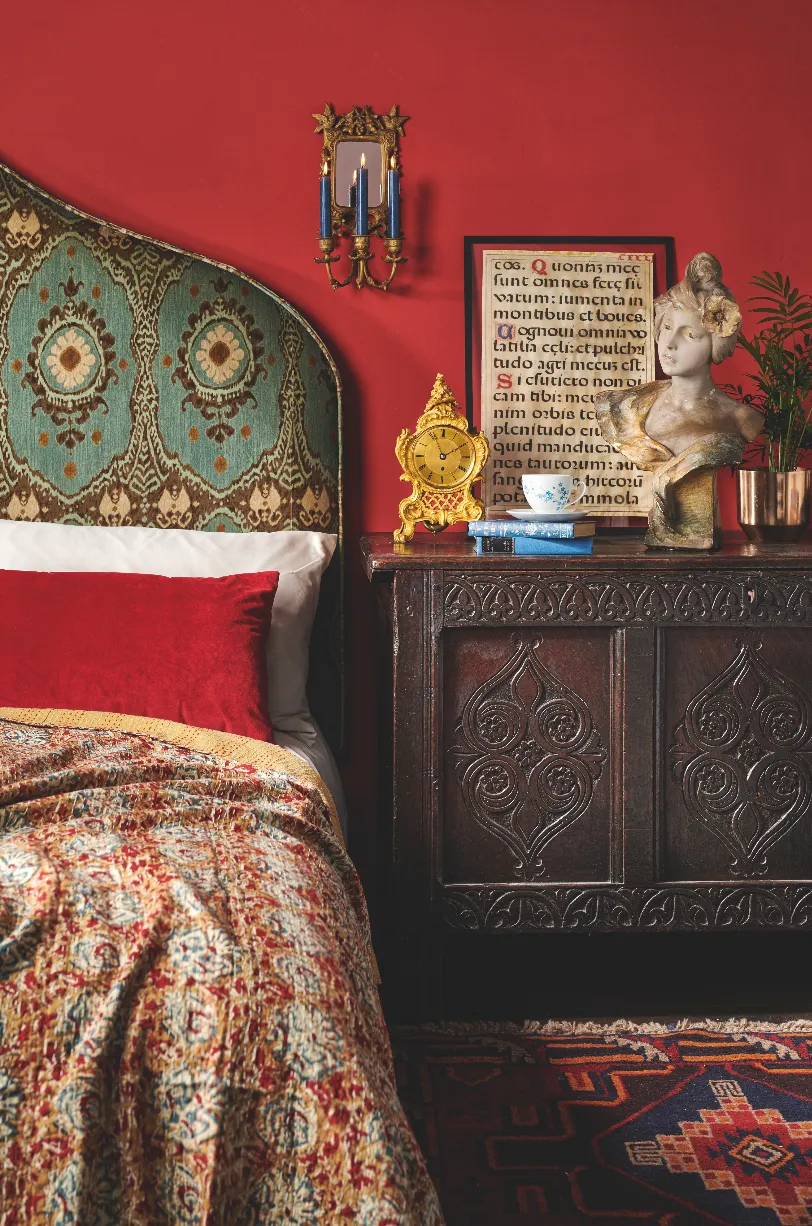
4
Our fall-front bureau was an easy auction win, and it’s a practical piece for the modern home. Store important letters in it, or sit at it to write cards and emails, then just close the lid to tidy it all away at the end of the day. The warm colours in our bargain rug set the wood off beautifully.
